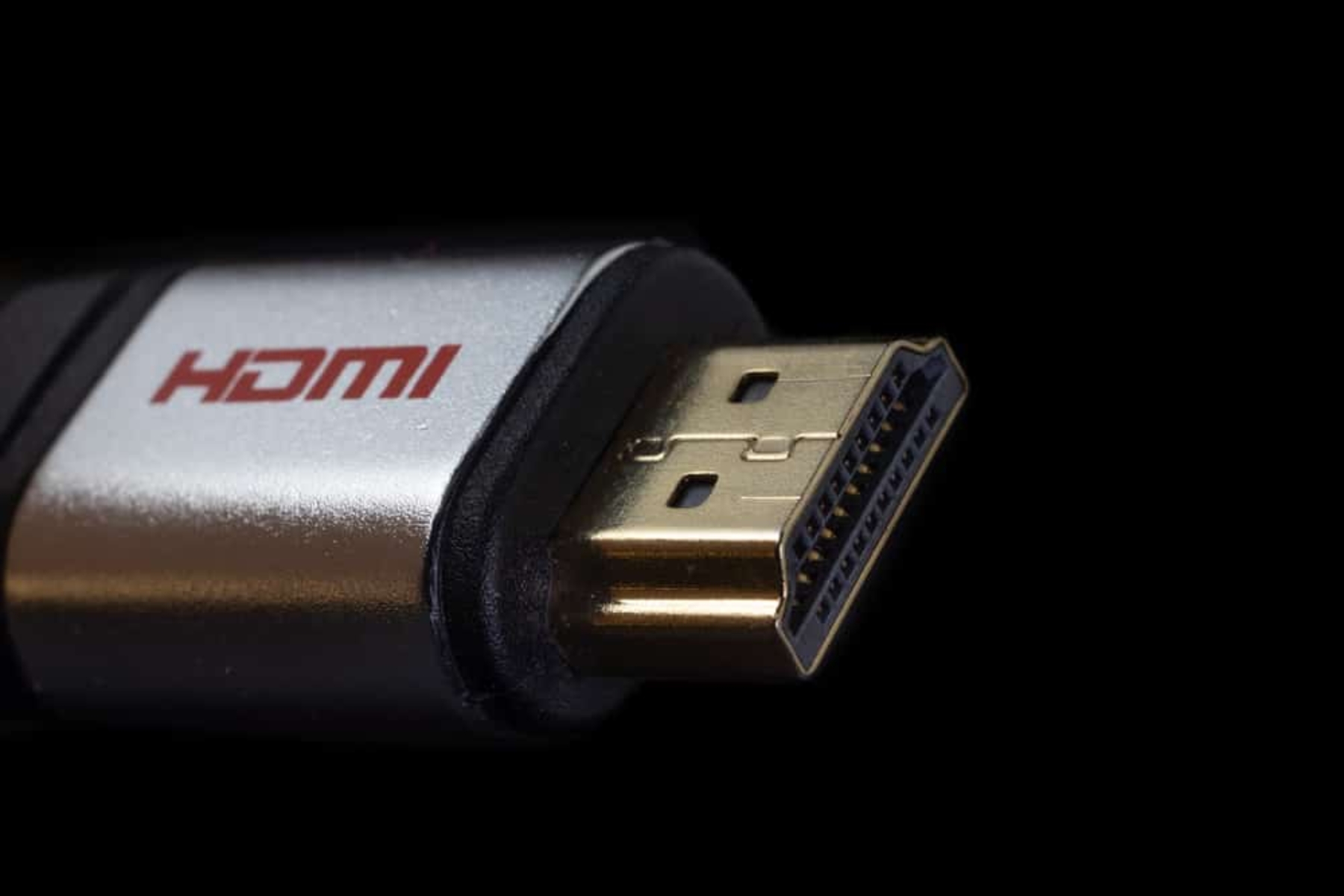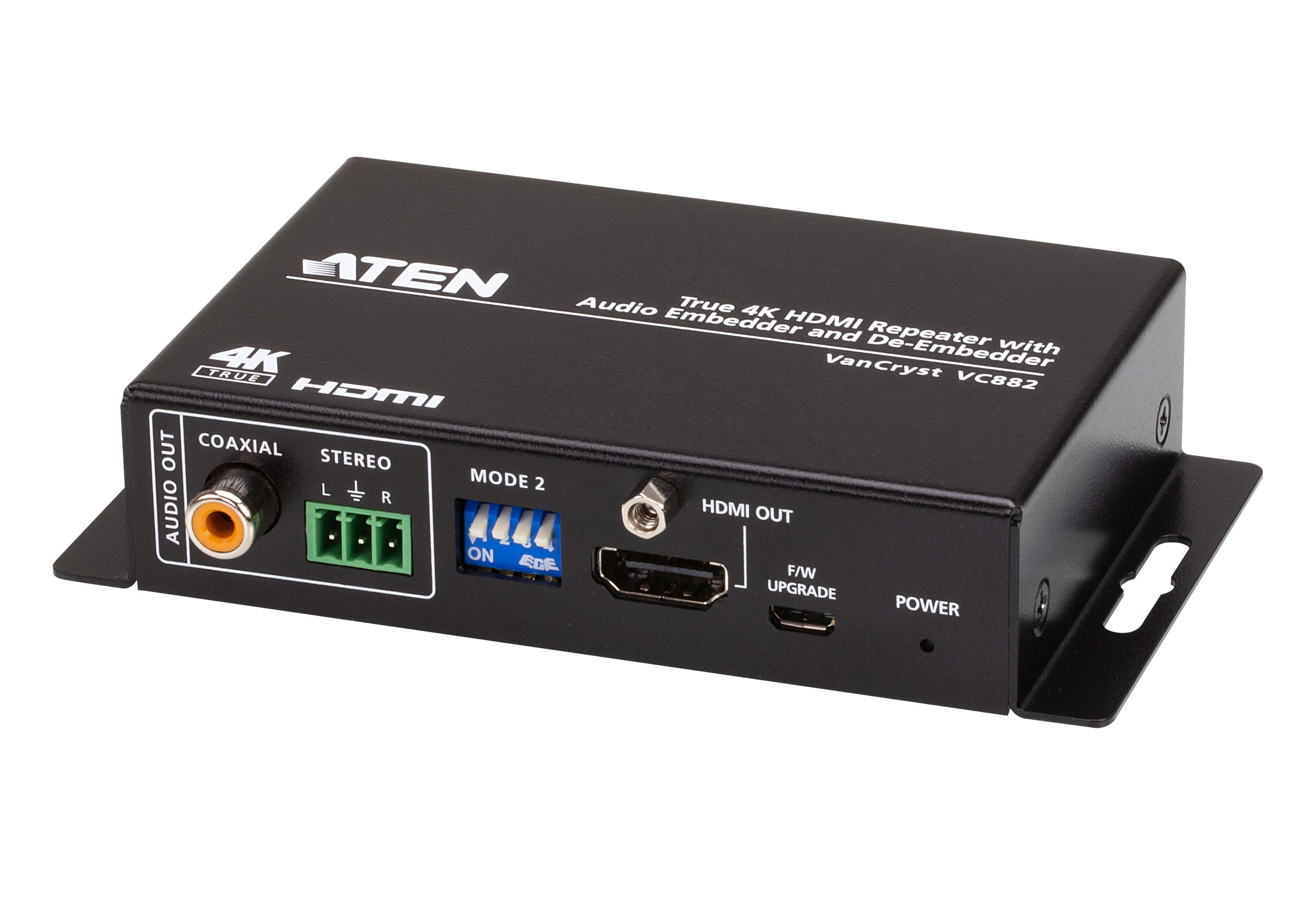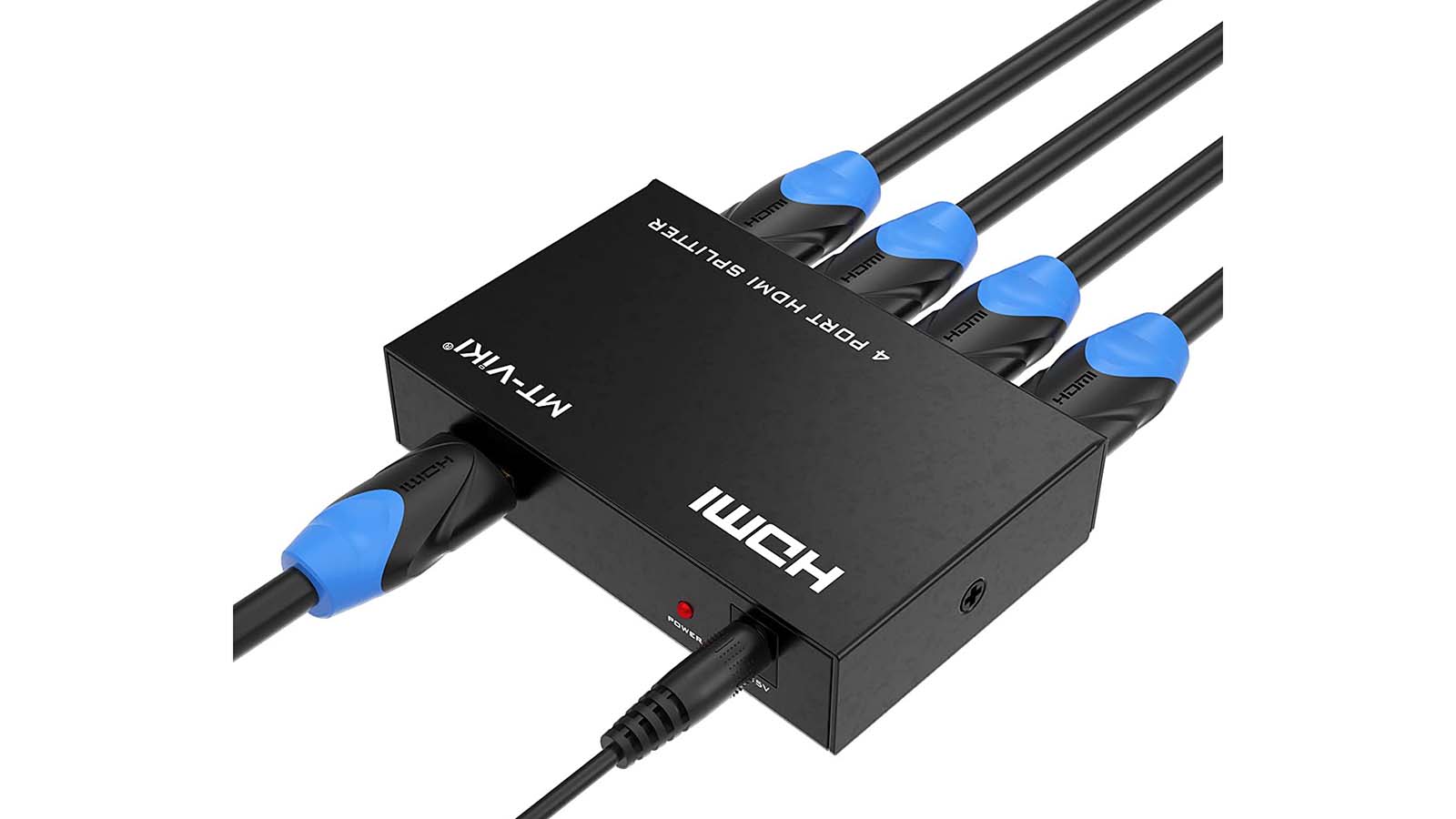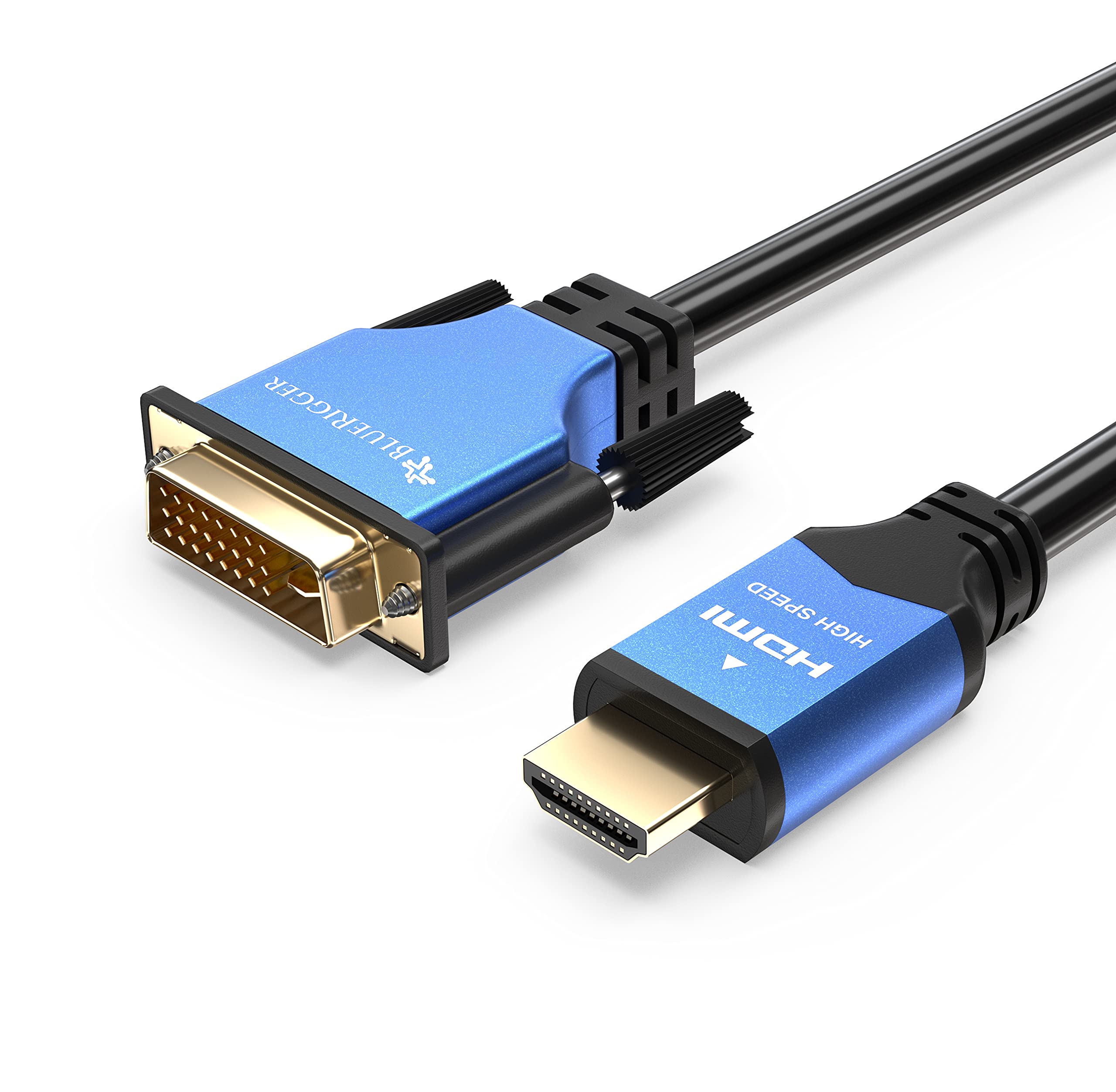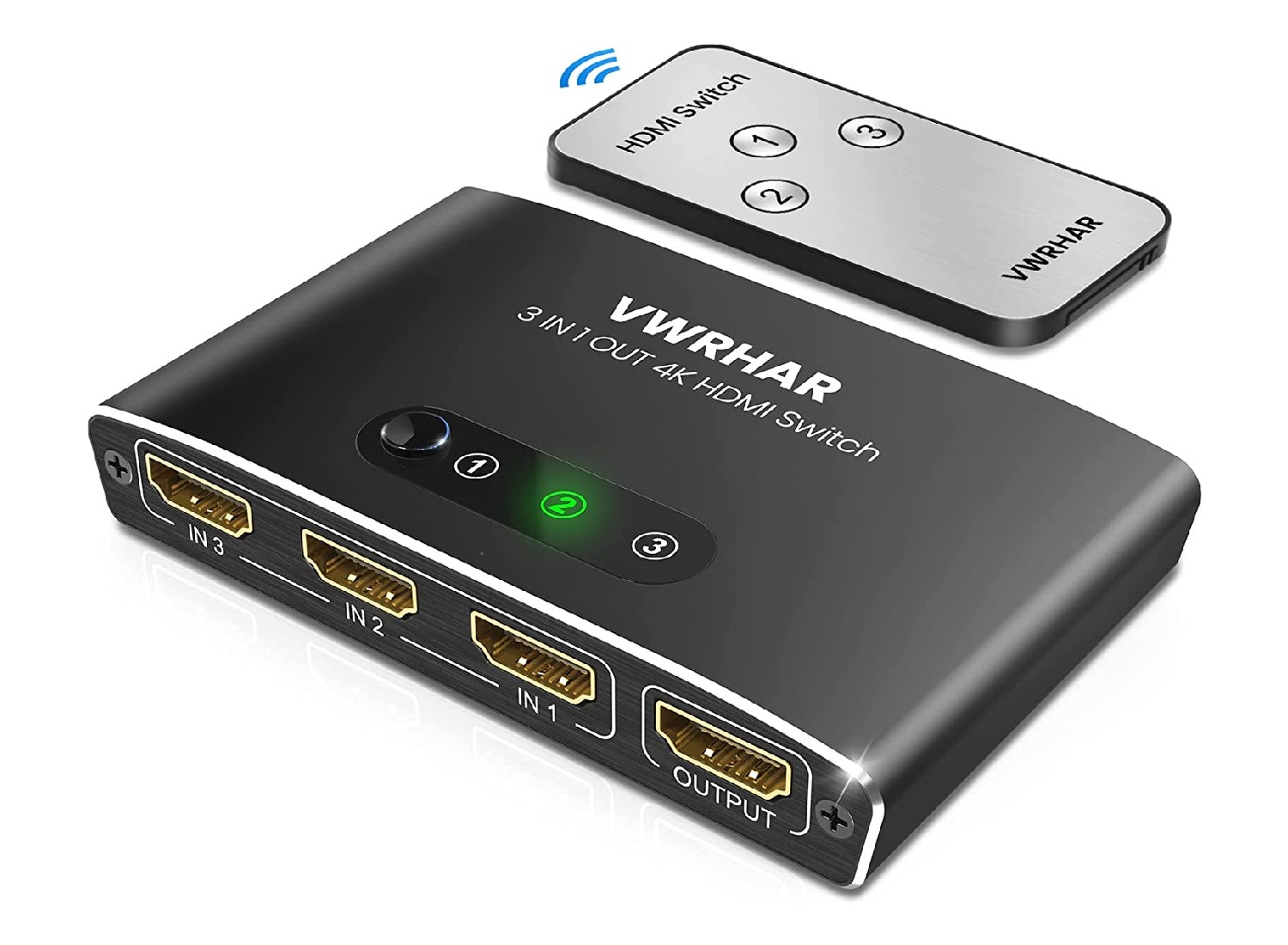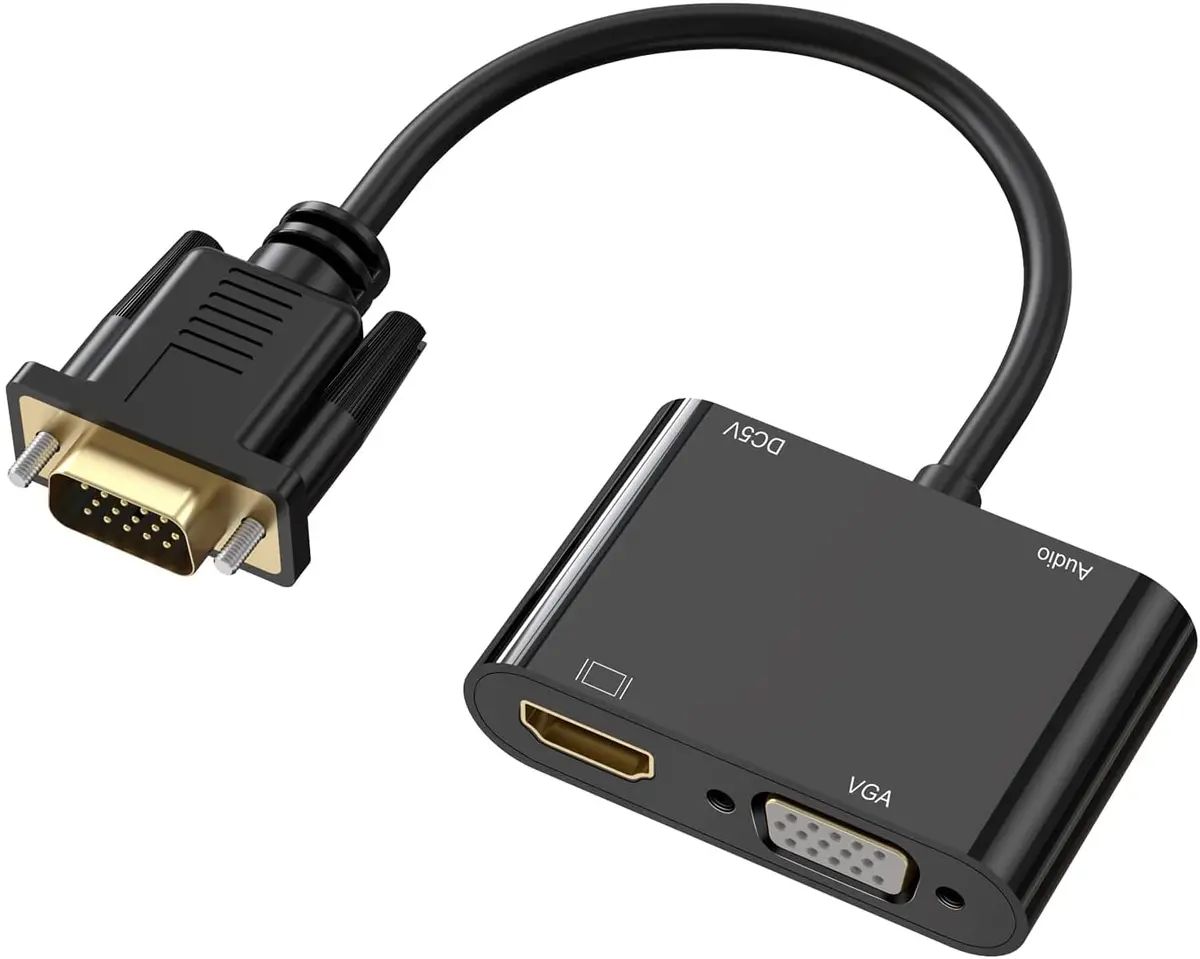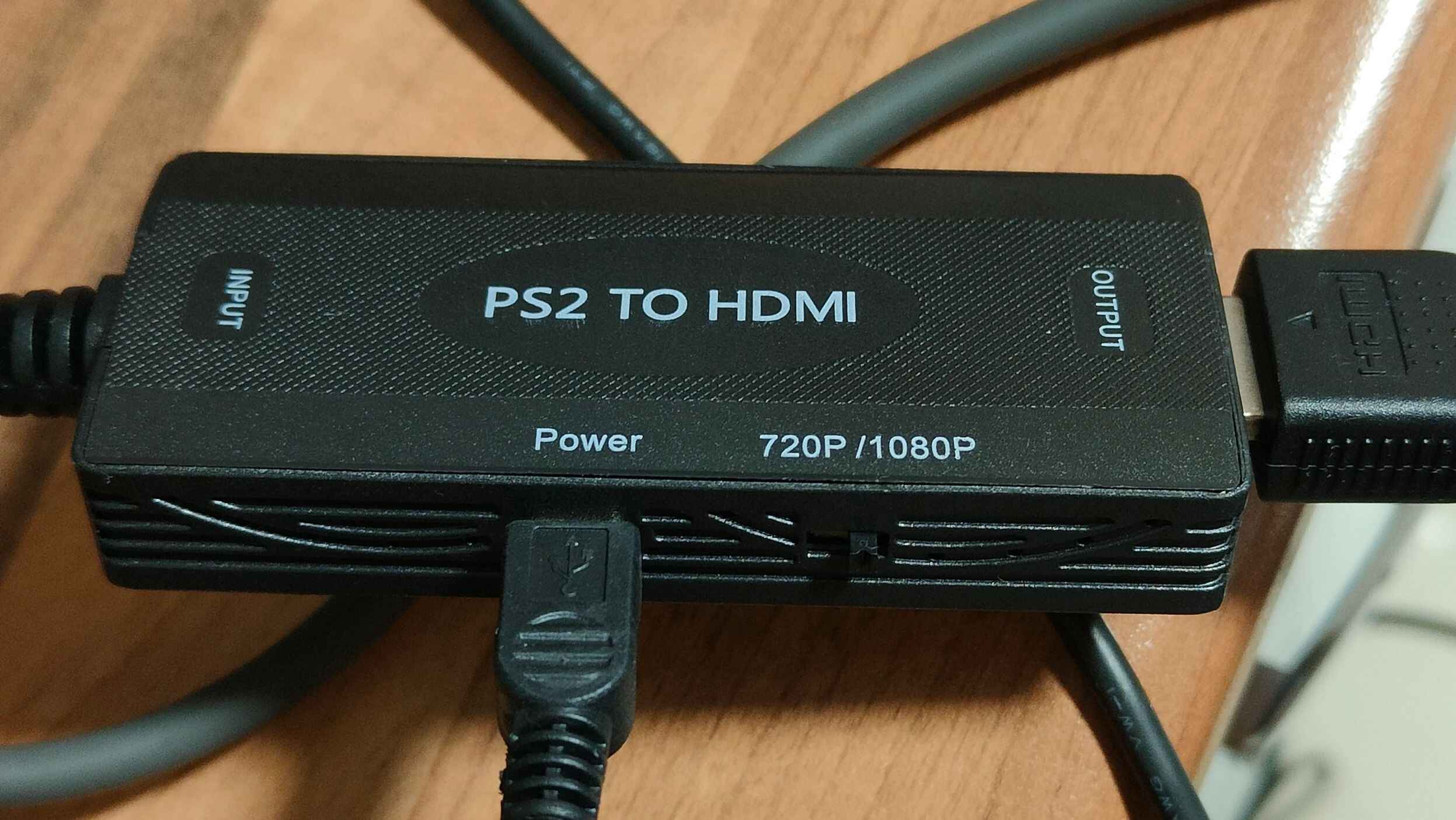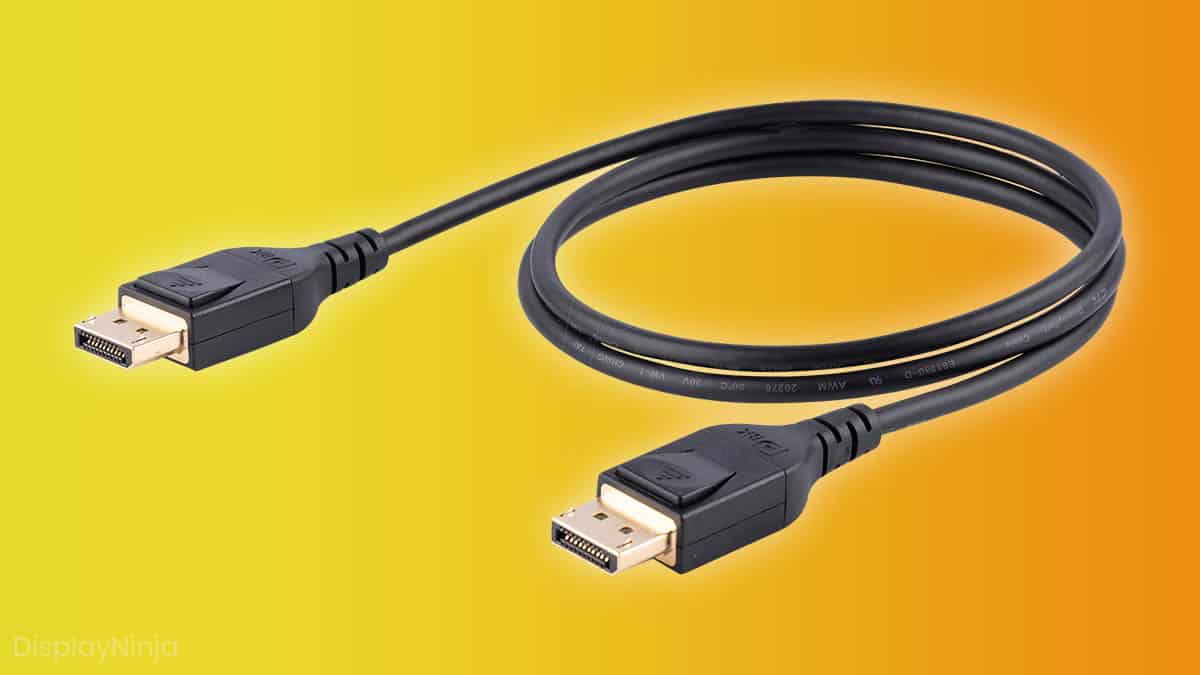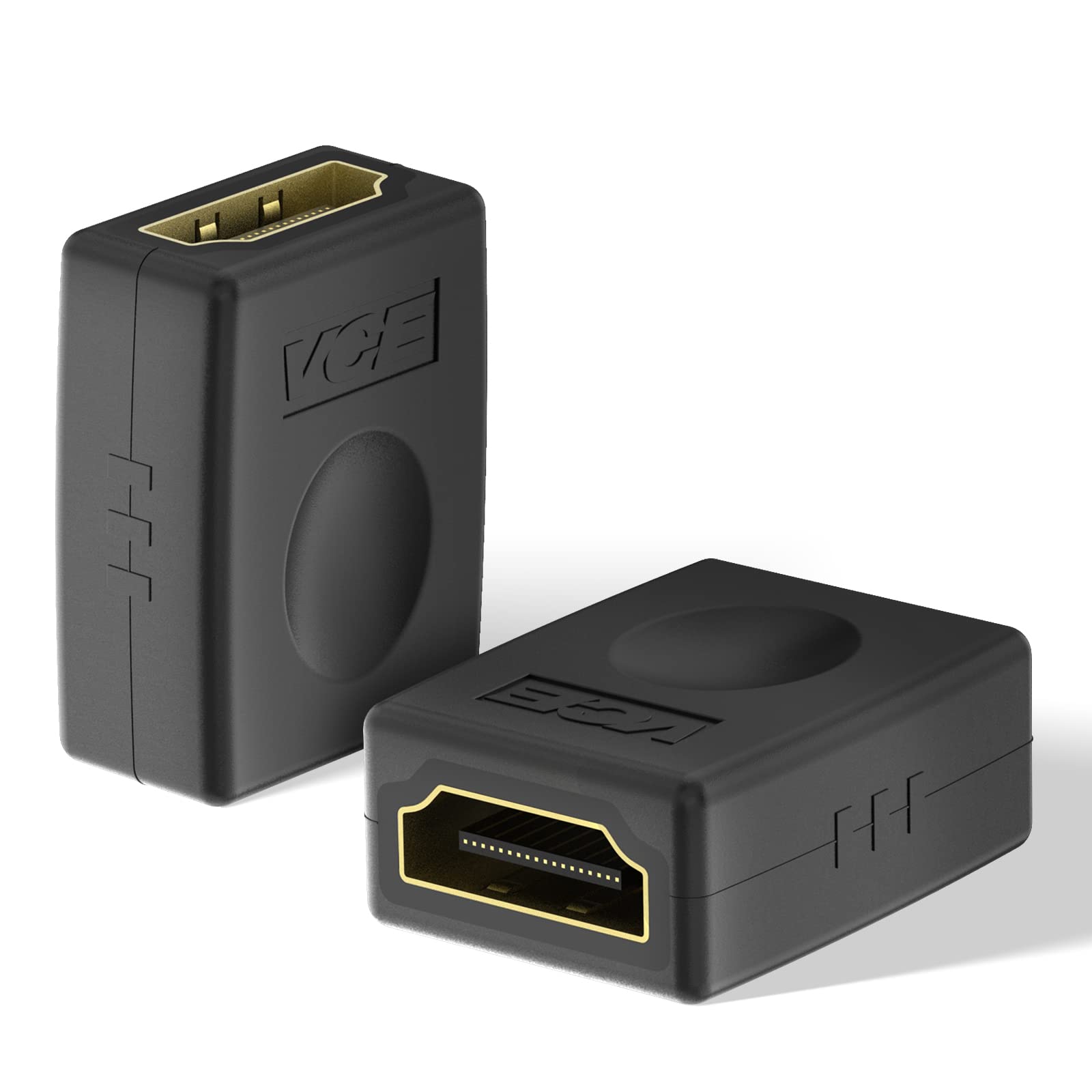Introduction
Welcome to the world of HDMI 2! If you are someone who loves watching movies, playing video games, or simply enjoys high-quality audio and video, then you have probably heard of HDMI. HDMI, which stands for High-Definition Multimedia Interface, is a technology that allows seamless transmission of audio and video signals between devices like TVs, laptops, gaming consoles, and more.
But what exactly does HDMI 2 mean? HDMI 2 is the second major iteration of the HDMI standard, promising improved performance and enhanced connectivity features. This latest version builds upon the success of its predecessor, HDMI 1.4, and introduces new advancements that cater to the ever-growing demands of modern audio and video technologies.
In this article, we will delve into the world of HDMI 2 and explore its features, capabilities, and benefits. Whether you’re an avid tech enthusiast, a home theater aficionado, or simply curious about the latest advancements in audio-visual technology, this article aims to provide you with a comprehensive understanding of HDMI 2 and its significance.
Throughout the article, we will compare HDMI 2 with its predecessor, HDMI 1.4, to highlight the key differences and improvements. We will also discuss important considerations to keep in mind if you’re thinking about upgrading to HDMI 2, ensuring that you make an informed decision that aligns with your specific needs and budget.
So, if you’re ready to discover the exciting world of HDMI 2, let’s dive right in and explore the possibilities that this technology unlocks for you!
What is HDMI 2?
HDMI 2 is the second version of the High-Definition Multimedia Interface (HDMI) standard. It is a technology that allows the transmission of high-quality audio and video signals between devices. HDMI 2 was designed to meet the increasing demands of modern audio and video technologies, providing users with enhanced connectivity and improved overall performance.
One of the standout features of HDMI 2 is its ability to transmit uncompressed, high-definition audio and videos signals over a single cable. This means that you can enjoy crystal-clear audio and stunning visuals without any loss in quality. HDMI 2 also supports a wide range of video resolutions, including Full HD (1080p), Ultra HD (4K), and even 8K resolution.
In addition to video, HDMI 2 also supports advanced audio formats, including Dolby TrueHD and DTS-HD Master Audio, allowing for immersive and high-fidelity sound experiences. This makes HDMI 2 ideal for home theater setups, gaming consoles, and any other audio and video applications that demand exceptional audio and visual quality.
Another important aspect of HDMI 2 is its backward compatibility with previous versions of HDMI. This means that you can easily connect HDMI 2 devices to older HDMI ports and still enjoy the benefits of improved performance and features. However, it’s worth noting that in order to take full advantage of HDMI 2’s capabilities, both the source device and the display or receiver need to support HDMI 2.
Overall, HDMI 2 is a significant advancement in audio-visual technology, offering users an unparalleled experience in terms of audio and video quality. Its compatibility with a wide range of devices and its ability to transmit high-definition signals over a single cable make it a popular choice for home theaters, gaming enthusiasts, and anyone who values top-notch audio and video performance.
In the next sections, we will dive deeper into the features and specifications of HDMI 2, as well as compare it to its predecessor, HDMI 1.4, to fully understand the improvements and benefits it brings to the table.
HDMI 2 Features and Specifications
HDMI 2 offers a range of exciting features and specifications that enhance the audio and video experience. Let’s explore some of the key features:
- Increased Bandwidth: One of the standout improvements of HDMI 2 is its increased bandwidth capability. HDMI 2.0 supports a bandwidth of up to 18 Gbps, which is almost double the bandwidth of its predecessor. This higher bandwidth allows for the transmission of more data, resulting in higher-quality audio and video signals.
- 4K and 8K Support: HDMI 2.0 embraces the era of high-resolution displays by supporting both 4K and 8K video resolutions. With HDMI 2.0, you can enjoy stunning visuals with incredible detail, vibrant colors, and smooth motion.
- Enhanced Refresh Rates: HDMI 2.0 offers improved refresh rates, which enhances the smoothness of motion in videos and games. It supports refresh rates of up to 60Hz at 4K resolution and up to 120Hz at 1080p resolution, providing a more immersive and lifelike viewing experience.
- Improved Audio: HDMI 2.0 supports advanced audio formats, including uncompressed 7.1 surround sound, Dolby Atmos, and DTS:X. This ensures that you can enjoy cinema-quality audio with immersive surround sound effects in the comfort of your own home.
- Dynamic HDR: HDMI 2.0 introduces support for Dynamic HDR, which enhances the contrast and color accuracy of HDR (High Dynamic Range) content. With Dynamic HDR, you can experience more vibrant colors and a wider dynamic range, bringing your movies and games to life.
- VRR and eARC: HDMI 2.0 includes support for Variable Refresh Rate (VRR) and enhanced Audio Return Channel (eARC). VRR reduces stuttering and lag in gaming by synchronizing the display’s refresh rate with the output of the game console. eARC enables the transmission of high-quality audio signals from the TV back to the AV receiver, allowing for immersive audio experiences.
These are just a few of the notable features and specifications of HDMI 2. The combination of increased bandwidth, support for higher resolutions, improved audio capabilities, and enhanced features like Dynamic HDR and VRR make HDMI 2 the go-to choice for enthusiasts who demand the best audio and visual experience.
In the next section, we will explore the improvements in video and audio quality that HDMI 2 brings compared to its predecessor, HDMI 1.4.
Improved Video and Audio Quality
HDMI 2 brings significant improvements in both video and audio quality, ensuring a more immersive and captivating multimedia experience. Let’s take a closer look at how HDMI 2 enhances the audio and video performance:
Video Quality: HDMI 2 supports higher resolutions, including 4K and even 8K, providing incredibly detailed and sharp visuals. With four times the resolution of Full HD, 4K resolution displays images with stunning clarity and lifelike detail. Whether you’re watching movies, playing games, or editing high-resolution content, HDMI 2 delivers exceptional video quality that truly showcases the beauty of modern displays.
In addition to higher resolutions, HDMI 2 offers improved color depth and color accuracy, thanks to features like Deep Color and xvYCC. Deep Color allows for a wider range of colors, providing smoother gradients and more realistic color reproduction. xvYCC, on the other hand, expands the color gamut, enabling displays to reproduce a broader and more vivid range of colors.
Audio Quality: When it comes to audio, HDMI 2 doesn’t disappoint. It supports advanced audio formats like Dolby TrueHD and DTS-HD Master Audio, delivering immersive surround sound experiences with incredible clarity and richness. Whether you’re watching an action-packed movie or playing a thrilling video game, HDMI 2 ensures that every sound effect, dialogue, and musical note is reproduced with remarkable precision and fidelity.
In addition to supporting high-quality audio formats, HDMI 2 also introduces audio features like Audio Return Channel (ARC) and Enhanced Audio Return Channel (eARC). These features allow for easy setup and connection of audio devices, eliminating the need for separate audio cables. With ARC and eARC, you can enjoy hassle-free audio transmission from your TV to your AV receiver or soundbar, ensuring that you get the best possible audio quality without any additional setup complexity.
Overall, HDMI 2 significantly improves video and audio quality, taking your multimedia experience to new heights. Whether you’re a cinephile, gamer, or simply someone who appreciates high-quality audio and visuals, HDMI 2 ensures that you can immerse yourself in a world of stunning imagery and lifelike sound.
Next, we will explore the higher bandwidth and data transfer rates that HDMI 2 offers compared to HDMI 1.4.
Higher Bandwidth and Data Transfer Rates
HDMI 2 introduces higher bandwidth and data transfer rates, which play a crucial role in delivering improved audio and video performance. Let’s delve into the details of HDMI 2’s bandwidth and data transfer capabilities:
Increased Bandwidth: HDMI 2.0 boasts an impressive bandwidth of up to 18 Gbps, nearly doubling the bandwidth of its predecessor, HDMI 1.4. This increased bandwidth enables the transmission of larger amounts of data, allowing for higher-quality audio and video signals. With greater bandwidth, HDMI 2 can handle the demands of high-resolution video formats, such as 4K and even 8K, ensuring that you can enjoy stunning visuals with exceptional clarity and detail.
Data Transfer Rates: HDMI 2.0 supports higher data transfer rates, ensuring fast and seamless transmission of audio and video signals. With increased data transfer rates, HDMI 2 can deliver smooth and uninterrupted streaming of high-quality content. Whether you’re streaming online videos, playing games with low latency, or transferring large files, HDMI 2 ensures a reliable and efficient data transfer experience.
These higher bandwidth and data transfer rates provided by HDMI 2 are particularly beneficial for content creators, professionals, and enthusiasts who work with high-resolution media and need to transfer large files quickly and effortlessly. Additionally, gamers will appreciate the low latency and smooth gameplay that HDMI 2 enables, allowing for an immersive and responsive gaming experience.
It’s important to note that to take full advantage of HDMI 2’s increased bandwidth and data transfer rates, both the source device (e.g., gaming console, Blu-ray player) and the display or receiver (e.g., TV, AV receiver) need to support HDMI 2. It’s also worth mentioning that HDMI cables supporting the higher bandwidth of HDMI 2 might be required to fully harness the capabilities of this technology.
In summary, HDMI 2’s higher bandwidth and data transfer rates significantly contribute to the overall improvement of audio and video quality. These advancements ensure that you can enjoy high-resolution content, fast data transfer, and seamless gaming experiences without any compromise in performance.
Next, let’s dive into the enhanced 3D and 4K capabilities offered by HDMI 2.
Enhanced 3D and 4K Capabilities
HDMI 2 brings enhanced capabilities in both 3D and 4K resolutions, catering to the growing demands of modern audio-visual technologies. Let’s explore how HDMI 2 elevates the 3D and 4K experiences:
Improved 3D Support: HDMI 2.0 expands on the 3D capabilities introduced in HDMI 1.4 and offers enhanced support for 3D content. With HDMI 2, you can enjoy immersive 3D experiences with greater depth, detail, and realism. Whether you’re watching 3D movies or playing 3D games, HDMI 2 ensures a smooth and captivating 3D experience, bringing your favorite content to life.
HDMI 2.0 supports higher 3D resolutions, including 1080p at 60Hz, allowing for a more immersive and lifelike 3D experience. It also introduces Dual-View mode, which enables two different people to watch different 3D content simultaneously on the same display, without any cross-talk or interference.
4K Ultra HD Support: HDMI 2.0 embraces the era of 4K Ultra HD resolutions, which offers four times the resolution of Full HD. With HDMI 2, you can enjoy stunning visuals with incredible detail, vibrant colors, and impeccable clarity. Whether you’re watching movies, playing games, or viewing high-resolution photos, HDMI 2 ensures that every single pixel is rendered with precision.
HDMI 2.0 supports 4K resolution at up to 60Hz, which ensures smooth and fluid motion on compatible displays. This enhanced capability is especially beneficial for gaming enthusiasts who demand high-performance and responsive gameplay. Additionally, HDMI 2 supports the wide color gamut of BT.2020, delivering a broader range of colors and more accurate color reproduction for a truly vibrant and lifelike viewing experience.
Whether you’re diving into the depths of a 3D world or exploring the stunning visual fidelity of 4K video content, HDMI 2 ensures that you can fully experience the immersive and captivating aspects of these advanced technologies.
Next, let’s compare HDMI 2 with its predecessor, HDMI 1.4, to understand the key differences and advancements.
Backward Compatibility with Older HDMI Versions
A notable advantage of HDMI 2 is its backward compatibility with older HDMI versions. This means that HDMI 2 devices can work seamlessly with devices that have older HDMI ports, ensuring compatibility and flexibility. Let’s explore how HDMI 2 achieves this backward compatibility:
HDMI 2.0 devices are designed to be backward compatible with HDMI 1.4, HDMI 1.3, and other earlier HDMI versions. This means that you can connect an HDMI 2.0 source device, such as a Blu-ray player or gaming console, to an HDMI 1.4 or HDMI 1.3 display, and they will still work together. However, it’s important to note that the capabilities and features of HDMI 2.0 may be limited when connected to an older HDMI device.
When HDMI 2.0 devices are connected to older HDMI ports, they will operate using the maximum capabilities supported by both the source device and the display. For example, if you connect an HDMI 2.0 device to an HDMI 1.4 display, it will function using the highest common resolution and other supported features between the two versions.
HDMI 2.0 devices also employ a feature called “Enhanced HDMI” or “HDMI 1.4 Enhanced” mode when connected to HDMI 1.4 ports. This mode allows HDMI 2.0 devices to leverage the higher bandwidth and capabilities of HDMI 2.0 while ensuring compatibility with the HDMI 1.4 standard.
It’s worth noting that to take full advantage of the advanced features and capabilities of HDMI 2, it is recommended to have both the source device and the display supporting HDMI 2. This ensures a seamless experience with access to all the enhanced features, such as higher resolutions, improved refresh rates, and advanced audio formats.
Overall, the backward compatibility of HDMI 2 provides users with flexibility and the ability to integrate HDMI 2.0 devices into existing setups without the need for major upgrades. This ensures that you can enjoy the benefits of improved performance and features offered by HDMI 2 while still utilizing your existing devices.
Next, we will dive into a detailed comparison between HDMI 2 and HDMI 1.4 to understand the key differences and advancements.
HDMI 2 vs. HDMI 1.4: What’s the Difference?
HDMI 2 and HDMI 1.4 are two major versions of the High-Definition Multimedia Interface (HDMI) standard, each offering different features and capabilities. Let’s compare HDMI 2 with its predecessor, HDMI 1.4, to understand the key differences:
Bandwidth: HDMI 2 introduces a higher bandwidth capability compared to HDMI 1.4. While HDMI 1.4 supports a bandwidth of up to 10.2 Gbps, HDMI 2.0 raises the bar by supporting up to 18 Gbps. This increased bandwidth allows for the transmission of higher-quality audio and video signals, supporting resolutions such as 4K and even 8K.
Video Resolutions: HDMI 2.0 expands on the video resolution capabilities of HDMI 1.4. While HDMI 1.4 supports 4K resolution at 30Hz, HDMI 2.0 supports 4K resolution at up to 60Hz, providing smoother motion and a more seamless visual experience. HDMI 2.0 also introduces support for higher refresh rates at lower resolutions, enabling a smoother gameplay experience for gamers.
Advanced Audio Formats: HDMI 2.0 supports advanced audio formats such as Dolby TrueHD and DTS-HD Master Audio. While HDMI 1.4 also supports these formats, HDMI 2.0 introduces enhancements in audio quality and fidelity, providing a more immersive and realistic audio experience.
Dynamic HDR: HDMI 2.0 supports Dynamic HDR, a feature that enhances the contrast and color accuracy of HDR content. This means that HDR content viewed through HDMI 2.0 displays will have more vibrant colors, deeper blacks, and brighter highlights compared to HDMI 1.4 displays.
Enhanced Audio Return Channel (eARC): HDMI 2.0 introduces eARC, which enhances the audio return channel capabilities of HDMI. eARC enables the transmission of high-quality audio signals from the TV back to the AV receiver, allowing for advanced audio formats, such as object-based audio formats like Dolby Atmos and DTS:X, to be experienced in their full glory.
VRR and Game Mode VRR: HDMI 2.1, an extension of HDMI 2.0, introduces Variable Refresh Rate (VRR) and Game Mode VRR, both of which are not available in HDMI 1.4. VRR reduces screen tearing and stuttering during gameplay, providing a smoother and more immersive gaming experience.
These are just a few of the key differences between HDMI 2 and HDMI 1.4. Overall, HDMI 2 offers higher bandwidth, support for higher resolutions and refresh rates, improved audio quality, and enhanced features like Dynamic HDR and VRR, making it a more advanced and future-proof choice for audio-visual applications.
Next, we will discuss important considerations to keep in mind before upgrading to HDMI 2.
Important Considerations before Upgrading to HDMI 2
If you’re considering upgrading to HDMI 2, there are a few important factors to consider before making the switch. Let’s explore these considerations to ensure a smooth transition:
Device Compatibility: Before upgrading to HDMI 2, check whether your existing devices, such as TVs, gaming consoles, and receivers, are compatible with HDMI 2. Ensure that both the source device and the display or receiver support HDMI 2 to fully benefit from its features. While HDMI 2 devices are backward compatible, it’s important to note that the capabilities may be limited when connected to older HDMI ports.
Cable Compatibility: HDMI 2 devices require HDMI cables that support the higher bandwidth and data transfer rates of HDMI 2. Ensure that you have the appropriate cables to achieve optimal performance. Look for HDMI 2.0 certified cables, which are designed to handle the increased bandwidth and ensure reliable data transmission.
Content Availability: Consider the availability of content that fully utilizes the capabilities of HDMI 2. While HDMI 2 supports higher resolutions like 4K and 8K, make sure there is sufficient content available in those formats. Additionally, check whether the devices you plan to connect via HDMI 2 have outputs in those resolutions to take advantage of the enhanced visuals.
Future-Proofing: HDMI standards continue to evolve to meet the demands of emerging technologies. While HDMI 2.0 is currently the latest standard, HDMI 2.1 and future versions are already on the horizon. Consider your long-term needs and whether it may be worth waiting for newer HDMI versions that offer even more advanced features.
Budget Considerations: Upgrading to HDMI 2 may require purchasing new devices or cables, which can have budgetary implications. Evaluate your budget and weigh the benefits of HDMI 2 against the costs involved. Assess whether the improved audio, video quality, and enhanced features justify the investment for your specific needs and usage scenarios.
By considering these factors, you can make an informed decision about upgrading to HDMI 2. Take into account the compatibility of your devices, the availability of content, the need for future-proofing, and your budget constraints. This will ensure that you can fully enjoy the benefits of HDMI 2 technology and make the most of your audio-visual experience.
Now that we have explored the important considerations, let’s wrap up this article.
Conclusion
HDMI 2 is a significant advancement in audio-visual technology, offering improved video and audio quality, higher bandwidth and data transfer rates, enhanced 3D and 4K capabilities, and backward compatibility with older HDMI versions. With its increased bandwidth, HDMI 2 enables the transmission of high-quality audio and video signals, supporting resolutions up to 8K and advanced audio formats for an immersive audio experience. The enhanced 3D and 4K capabilities of HDMI 2 provide stunning visuals with exceptional detail and realism.
Backward compatibility ensures that HDMI 2 devices can seamlessly integrate with older HDMI versions, offering flexibility in upgrading without the need for immediate device replacements. However, it’s essential to consider device and cable compatibility, content availability, future-proofing, and budget implications before deciding to upgrade to HDMI 2.
If you’re an audio-visual enthusiast, a gaming enthusiast, or simply someone who appreciates high-quality audio and video experiences, HDMI 2 is worth considering. Its compatibility with a wide range of devices, improved performance, and advanced features make it an ideal choice for home theaters, gaming consoles, and other applications that demand exceptional audio and visual quality.
So, whether you’re basking in the breathtaking visuals of 4K content, immersing yourself in the world of 3D entertainment, or enjoying the crisp and lifelike audio, HDMI 2 ensures that you can fully experience the wonders of modern audio-visual technology.
Now that you have a comprehensive understanding of HDMI 2 and its features, you can confidently make an informed decision about integrating this technology into your audio-visual setup. Upgrade to HDMI 2 and elevate your multimedia experience to a whole new level of excellence.







